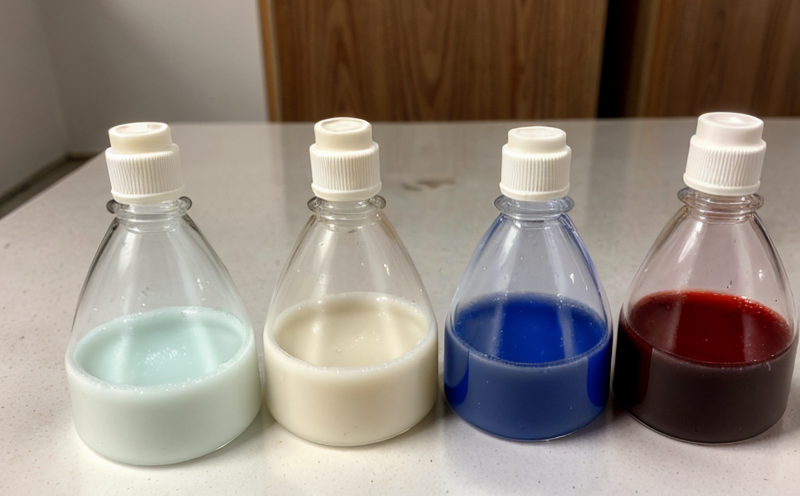GB T 24131 Oligomer Testing in Rubber Products
The GB/T 24131 standard is a critical guideline for ensuring the safety and quality of rubber products. This testing method focuses on identifying oligomers, which are small chains of monomeric units that can potentially migrate from rubber materials into consumer goods or environments. Oligomer migration has been linked to various health concerns, particularly in footwear, tires, and other rubber-based items.
The standard outlines a procedure for quantifying the amount of oligomers present in rubber products. This is essential because excessive levels can lead to adverse effects on human health, especially through prolonged skin contact or inhalation. By adhering to this test method, manufacturers can ensure their products meet stringent safety and quality standards.
The testing process involves extracting potential oligomers from the rubber sample using a specific solvent. The extracted compounds are then analyzed using advanced analytical techniques such as liquid chromatography coupled with mass spectrometry (LC-MS). This technique allows for precise identification and quantification of various oligomer species present in the sample.
Before conducting the test, it is crucial to prepare the rubber specimen correctly. This includes slicing the material into small, uniform pieces that can be consistently processed. The preparation method must be standardized to ensure reproducibility and accuracy of results. Once prepared, the samples are extracted using a solvent that effectively releases oligomers from the matrix without altering their chemical composition.
The GB/T 24131 standard provides detailed instructions for sample extraction, including the type of solvent to use, the contact time required, and temperature conditions. It is important to follow these precise guidelines to ensure reliable results. After extraction, the samples are analyzed using LC-MS, which allows for high-resolution separation and detection of oligomers.
The acceptance criteria specified in GB/T 24131 define the maximum permissible levels of oligomers that can be present in rubber products without posing a significant risk to human health. Compliance with these limits is mandatory for manufacturers seeking certification or regulatory approval. Failure to meet these standards could result in product recalls, legal action, and damage to brand reputation.
- Sample preparation: Slicing the specimen into uniform pieces.
- Solvent selection: Using a solvent that effectively extracts oligomers without altering their chemical composition.
- Contact time: Allowing sufficient contact time for effective extraction of oligomers.
- Temperature control: Maintaining optimal temperature conditions during the extraction process.
The testing procedure is designed to be robust and reliable, ensuring consistent results across different laboratories. The use of advanced analytical techniques like LC-MS provides high accuracy and precision, making it a trusted method for regulatory compliance and quality assurance.
In conclusion, the GB/T 24131 test is essential for manufacturers who wish to produce safe and compliant rubber products. By adhering to this standard, they can ensure their products meet stringent safety requirements, thereby protecting consumer health and maintaining brand integrity.
Benefits
The benefits of conducting GB/T 24131 oligomer testing in rubber products are numerous. Firstly, it ensures that the product complies with international safety standards, which is crucial for market access and regulatory compliance. This can prevent costly recalls and legal disputes.
Secondly, by identifying and quantifying oligomers present in rubber materials, manufacturers can optimize their production processes to minimize migration into consumer goods. This not only enhances product safety but also improves customer satisfaction and loyalty.
Thirdly, the test helps in maintaining a consistent quality level across different batches of rubber products. This consistency is vital for brand reputation and ensures that customers receive high-quality products every time they purchase from your company.
Finally, compliance with GB/T 24131 can enhance trust between manufacturers and their suppliers. It demonstrates a commitment to excellence and attention to detail, which are highly valued in the industry.
The testing process also aids in early detection of potential issues within the production line. By regularly monitoring oligomer levels, manufacturers can identify any deviations from expected standards and take corrective actions promptly.
Quality and Reliability Assurance
- Consistent Results: The use of standardized procedures ensures that results are consistent across different laboratories, enhancing reliability.
- Precision Measurement: Advanced analytical techniques like LC-MS provide precise measurements, critical for accurate compliance assessment.
- Rigorous Extraction Method: The extraction process is designed to effectively release oligomers without altering their chemical composition, ensuring accurate quantification.
- Comprehensive Reporting: Detailed reports are generated that include all relevant data and findings, providing a comprehensive overview for decision-making.
The robustness of the testing procedure ensures that results are reliable and can be trusted. This trust is essential for manufacturers to make informed decisions about their products and processes.





